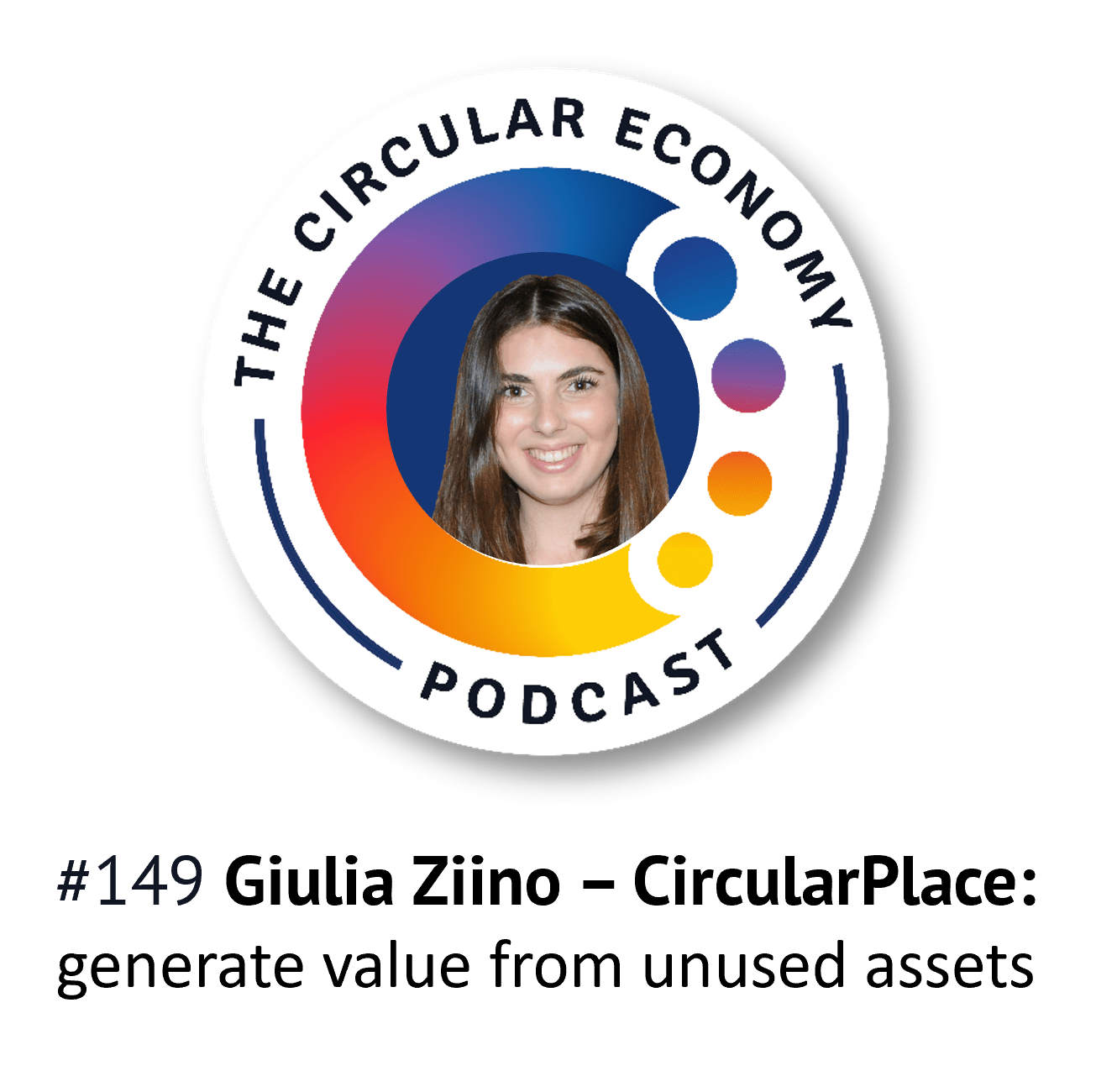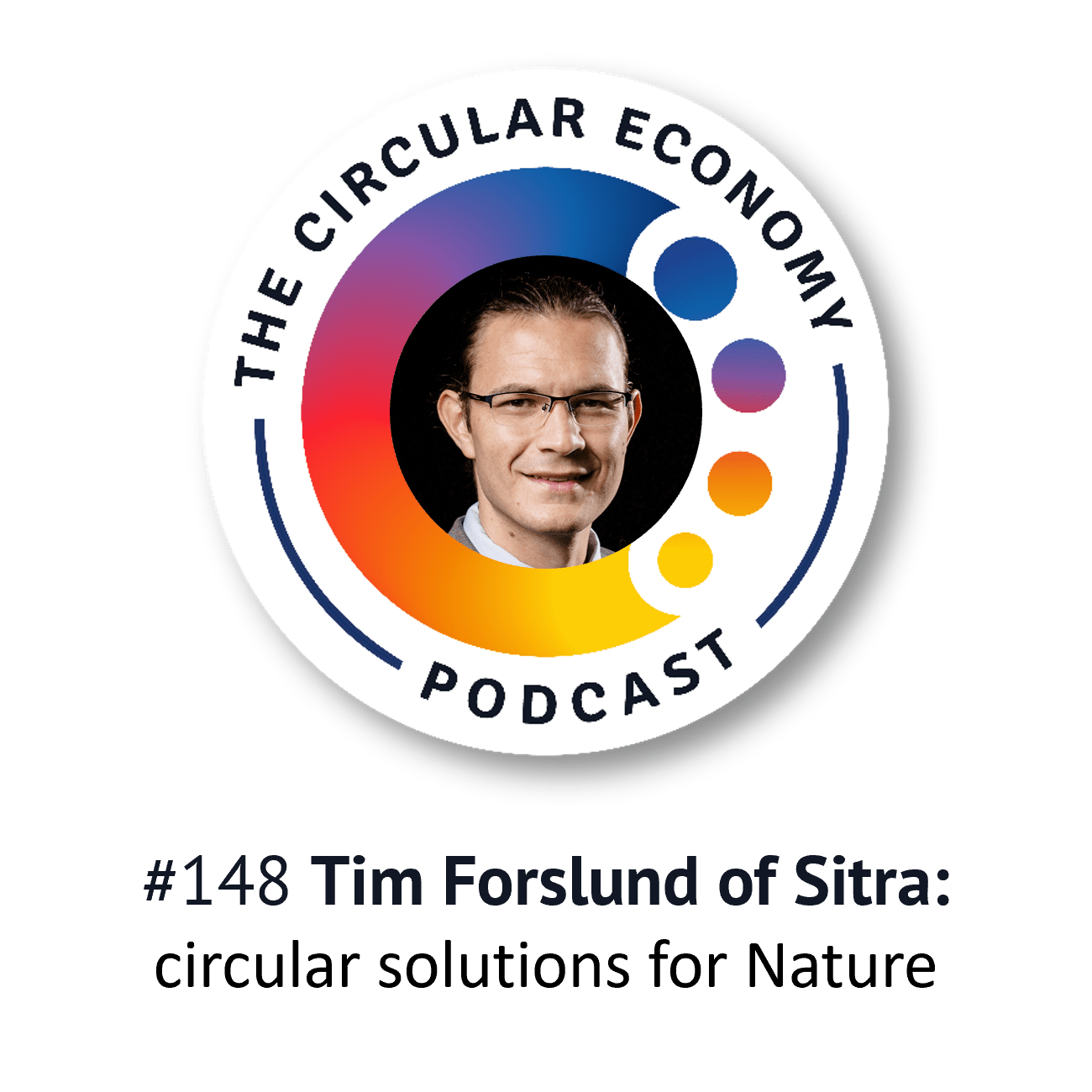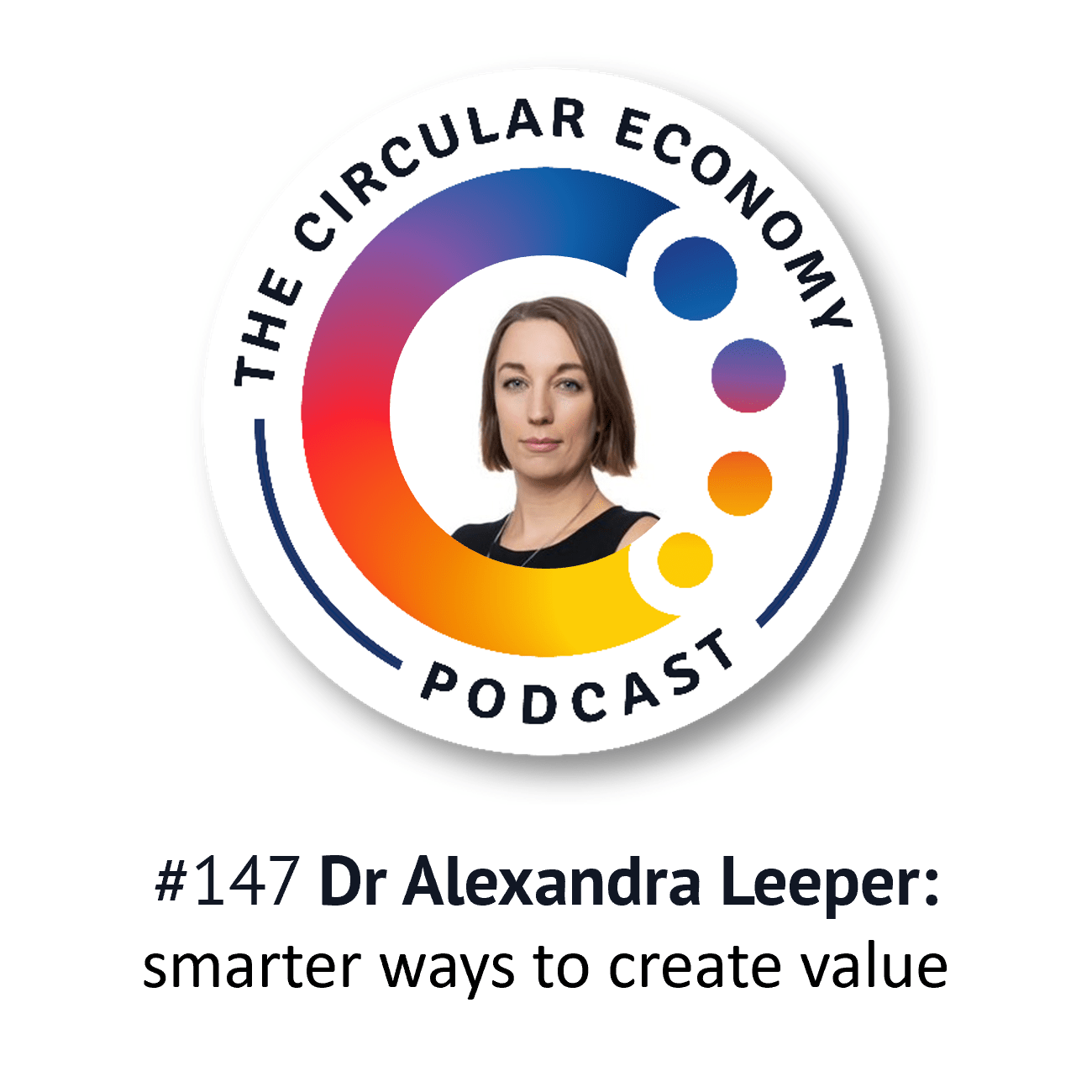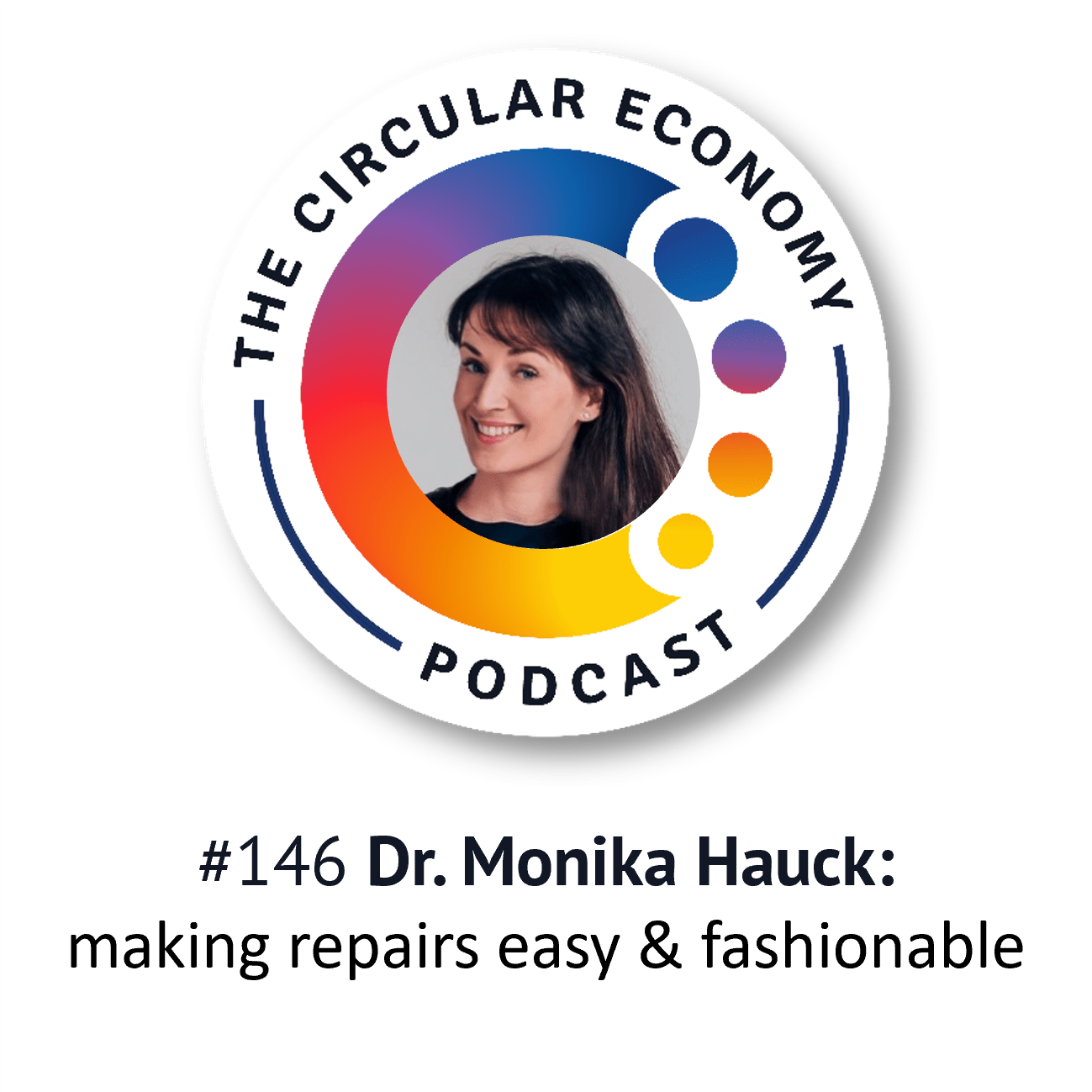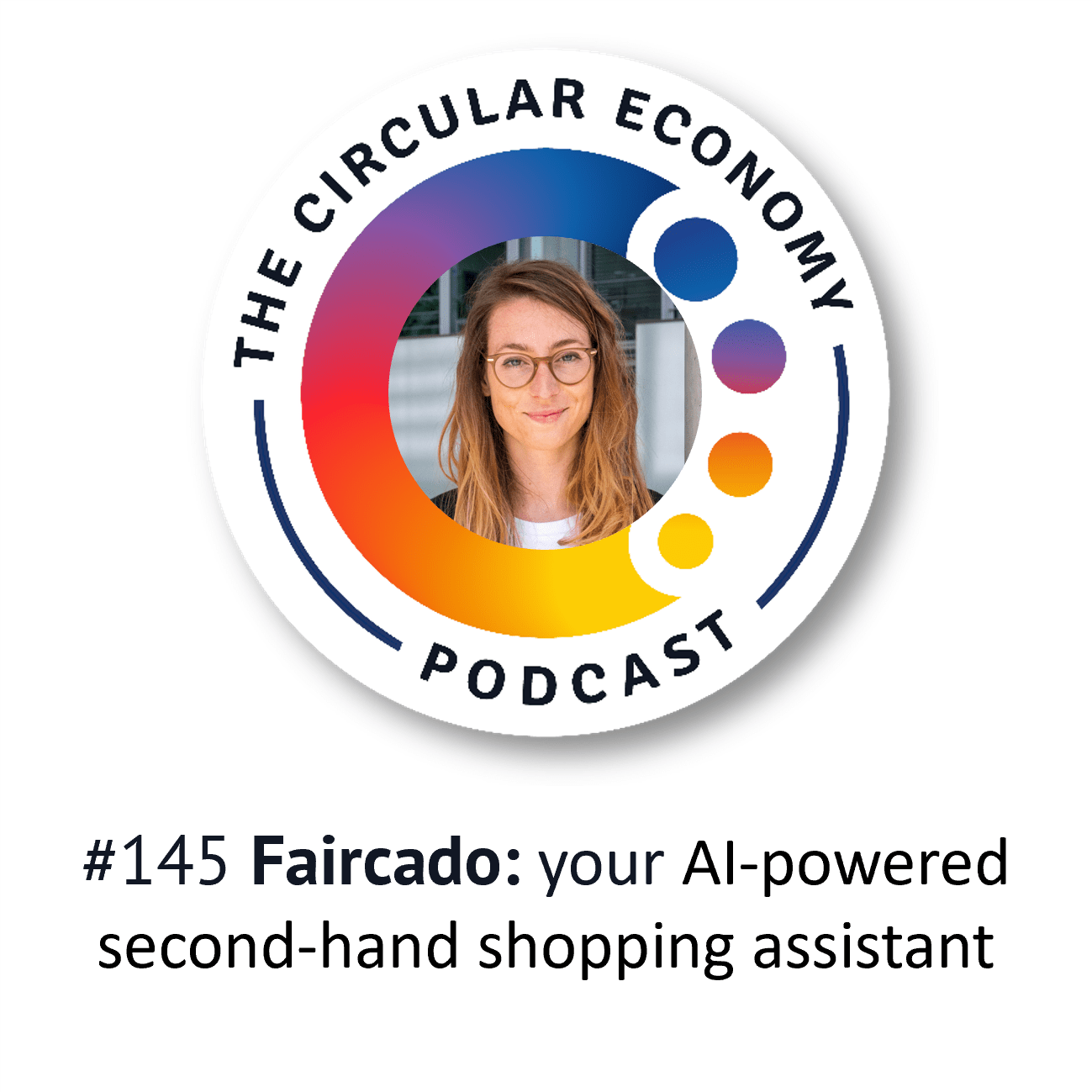Podcast: Play in new window | Download
I’m excited to let you know that the 2nd edition of A Circular Economy Handbook is now on sale. Whoopee!
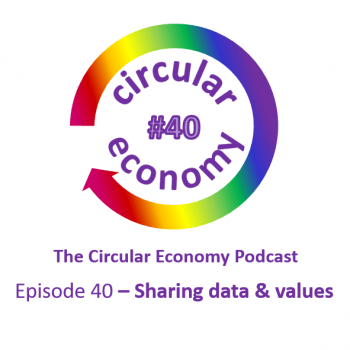 It’s been a long wait. It should have been published in the summer, but the UK book industry went into lockdown, with printers and wholesalers either closed or understaffed. Now, it’s finally on sale, in print or ebook versions.
It’s been a long wait. It should have been published in the summer, but the UK book industry went into lockdown, with printers and wholesalers either closed or understaffed. Now, it’s finally on sale, in print or ebook versions.
Thank you to the editorial, publishing and marketing teams at Kogan Page, and to all those people who helped with feedback and provided endorsements. And a big thank you to those who wrote contributions, including Richard James MacCowan and Katie Beverley for their new sections on biomimicry and ecodesign.
I’ll tell you a bit more about the 2nd edition and give you a code for a 20% discount at the end of this episode, so get your notepads ready!
In this episode, we’re rounding up some of the themes emerging from the last nine conversations. We’ve talked to people in Australia, the US, the Netherlands and the UK.
We’ve spoken to two organisations making fantastic products out of waste, particularly waste plastics. We’ve talked to a remanufacturer of beautiful, high-quality office furniture, and we’ve talked to several businesses helping to ‘intensify’ resource loops, so we can get more use and productivity out of many different kinds of resources, everything from equipment to staff.
One of the themes I noticed is that people everywhere are wanting to be part of the solution, not part of the problem. It’s becoming a motivator for companies, and being factored into decisions, particularly for procurement. We’ll come back to that later.
Podcast host Catherine Weetman is a circular economy business advisor, workshop facilitator, speaker and writer. Her award-winning book, includes lots of practical examples and tips on getting started. Catherine founded Rethink Global in 2013, to help businesses use circular, sustainable approaches to build a better business (and a better world).
Stay in touch for free insights and updates…
Read on for a summary of the podcast and links to the people, organisations and other resources we mention.
You can subscribe to the podcast series on iTunes, Google Podcasts, PlayerFM, Spotify, TuneIn, or search for “circular economy” in your favourite podcast app. Stay in touch to get free insights and updates, direct to your inbox…
Links we mention in the episode:
- Rethink Global’s Circular Coaching https://www.rethinkglobal.info/coaching-and-advice/
- A Circular Economy Handbook https://www.rethinkglobal.info/circular-economy-handbook/ and at Kogan Page (publisher, ships worldwide) https://www.koganpage.com/product/a-circular-economy-handbook-9781789665314
- Episode 31 – Tom Fecarotta of Rheaply https://www.rethinkglobal.info/episode-31-tom-fecarotta-of-rheaply/
- Episode 32- Christian van Maaren of Excess Materials Exchange https://www.rethinkglobal.info/episode-32-christian-van-maaren-of-excess-materials-exchange/
- Episode 33 – Greg Lavery of Rype Office https://www.rethinkglobal.info/episode-33-greg-lavery-of-rype-office/
- Episode 34 – Noreen Kam and Michael Brown of LUP Global https://www.rethinkglobal.info/episode-34-noreen-kam-and-michael-brown-of-lup-global/
- Episode 35 – Sophie Segal: the power of play https://www.rethinkglobal.info/episode-35-sophie-segal:-the-power-of-play
- Episode 36 – Dan Dicker of Circular&Co https://www.rethinkglobal.info/episode-36-dan-dicker-of-circular&co/
- Episode 37 – Lieke van Kerkhoven of FLOOW2 Healthcare https://www.rethinkglobal.info/episode-37-lieke-van-kerkoven-of-floow2/
- Episode 38 – Zaqiya Cajee of SwopItup https://www.rethinkglobal.info/episode-38-zaqiya-cajee-of-swopitup/
Transcript (from AI)
Catherine Weetman We started by talking to Tom Fecarotta in Ep 31. Tom works for Rheaply, in the United States. Rheaply’s mission is to make the world’s resources more discoverable and transferable through technology.
Rheaply combines enterprise asset management with a virtual marketplace, which allows organizations to track inventory and depreciation. It helps people to visualize, quantify and use surplus assets, and to offload end-of-life, unwanted assets to organisations that need them.
We talked about the difference between typical approaches in the United States compared to Europe, with lots of focus on Zero Waste strategies in the US, and companies asking what are we discarding, and what assets, equipment and consumables are we sitting on.
We hear about Rheaply’s Asset Exchange Manager, and allowing people to highlight those unused assets, equipment and consumables so that specific teams and business units can reuse those resources.
Tom Fecarotta And then from a sort of waste diversion and tracking perspective, our platform kind of gives you insights into, “Okay, what are the classes of assets that are being reused the most? Where can we make systemic improvements on other resources?” And it’s kind of all done in this easy-to-use user interface.
Catherine Weetman And are you able to help companies and other organisations, universities and so on, benchmark against similar organisations? So if your best-in-class university had a reuse rate for chemicals of this and lab equipment of that, are you able to kind of give people a picture of where they should be aiming to?
Tom Fecarotta I will say that we can give them a picture of that information from an intramural or from an internal perspective. But we haven’t done it in the sense of, hey, we’re going to share the metrics of one organisation against another. We don’t want to pit organisations against each other, we want to make sure that they understand how they’re improving waste diversion efforts across campuses, across business units, and how they can make, you know, marked improvements
Tom Fecarotta Yeah, we have a sort of a categorical shift organisation to organisation. So the beauty of Rheaply is you can configure it to your organisation. So, you know, how Rheaply looks to an institution will look different than how it looks to a manufacturer. Same thing with biopharma, right, they might want thousands of antibodies, and so we’ll have to measure the rate of exchange by volume, in some cases, so we’ve built this system, it’s a progressive web application that — not to get super technical — allows for this sort of configuration changes so that really any two organisations can connect via a shared category interest.
Catherine Weetman Okay, so Rheaply sits in the middle with a standardised set of categories. And each of the users can tweak the terminology, according to what they call it.
Tom Fecarotta Exactly.
Catherine Weetman In Episode 32, we talked to Christian van Maaren from Excess Materials Exchange, in the Netherlands. Excess Materials Exchange describes itself as a dating site for secondary materials and waste, matchmaking between those who have materials, and those who need them.
Christian explains how the system works, and goes on to talk about Excess Material Exchange’s semantic web of the circular economy:
Christian van Maaren Sure. So the way that we work is is basically threefold. What we do is that when a company comes to us with a particular material flow or with a product, we give an identity to that stream or to that object, because we see that waste is really a material without an identity. And by giving it back that identity using something that we call the resources passport, it then gets almost by having that I didn’t see value again. And next to the identity, we add intelligence to that. And we do that through a host of artificial intelligence tools that we’re building. And we’re combining that with our own intelligence which is not so artificial. And that’s the the engine behind our matchmaking process, and next to the intelligence, we use an integrated approach. We help our clients really from the start till the end with the matchmaking as much as we can, but as also as much as the client needs. If it’s like a large company that we work with, they probably want to use their own logistical service provider or their own legal advices. But if they don’t have that, because they’re, you know, maybe a bit of a smaller organisation, we can help with that as well.
Christian van Maaren Basically, if you if you flatten what we do As the number of things we create the economies of supply and economies of demand, because we map resource flows, and we always look out for companies that could use certain excess materials or waste. And also because of that, by making those streams visible, all of a sudden that may become interesting for another company to invest a little bit more money on getting a certain processing capability on the market so they can tap into the value that that data provides. And also what we do is that we build a fairly big database now about 4000 entries in which we have mapped all the different recycling or reuse abuse that there are around the globe, mostly focused on Europe. And we’ve also added to that database the technological readiness level. But this can also inform our clients on you know what is already currently operational that they can just more or less plug and play But also on things that are on the horizon and things that they may be able to plan for or maybe even invest in, because they just want to give it a little nudge to get ready for the market.
Catherine Weetman Hmm, yeah, that’s a good point. And yeah, in in my own, sort of, call it a database, but it’s a spreadsheet really of 600 odd, circular economy examples. That’s one of the things I’ve done if if somebody just had a research breakthrough, but it’s not yet commercialised, then I’ll you know, I’ll note that it’s at that stage rather than being a fully-fledged up and running thing. And a lot of those, if you go back a couple of years later, have made it to market but some of them may not have done. So yeah, I think things are just changing so quickly that, you know, it’s got to be one of the underlying principles, hasn’t that for anybody involved in the circular economy is to keep looking at what’s what’s evolving outside to see if there’s now a better solution than the one that started off with.
Christian van Maaren Absolutely. And the way that we approach that is by building what they call a semantic web of the circular economy or a linked database where we link the information from the passports that are in our database, looking at information by a product level on a component level, and on a material level, but also on a functional level. And then linking that to other database that we have on recycling, capacity recycling capability, other reuse options that are are for all sorts of materials. And by connecting those and then laying those all on top of each other, you create what they call this semantic web. And that would help us to not only find matches much quicker, but also find much more relevant than maybe interesting matches. But of course, as this database grows, and as we connect it with information on environmental impact, and on social impact, it allows us to keep us sort of evergreen and keep our clients informed of what is going on and what the impact of their decisions is.
Catherine Weetman In Ep 34, Noreen Kam and Michael Brown from LUP Global in Australia tell us about the circular asset management solution they’ve developed.
Their solution helps companies to reduce their capex, improve the performance and lifetime cost of equipment, and recover value from the equipment at the end of its service period. Michael explains how this approach is normal in the airline industry, where often the airline doesn’t own anything – the plane, the engines, even the seats. Instead, everything is owned and maintained by the suppliers. Rolls Royce is a well-known example of this, starting to sell “power by the hour” in the 1990’s, so an airline buys the performance of the engine, instead of buying the engine itself.
Noreen and Michael realised that many other industry sectors don’t use these approaches, but could do. LUP Global is helping companies benefit from circular asset management, starting with laboratory equipment.
Noreen Kam So we’re really excited because our passion is really to prolong the life cycle of assets to minimise landfill. And we what we’ve created is we’ve established a network that’s all about the full lifecycle of the asset, considering from the start all the stakeholders from the original equipment manufacturer, to the buyers of the assets, to building a network of service partners to support those assets in their second life or subsequent lives and In the mindset shift of sellers of the assets, as opposed to that traditional linear mindset of procuring, using and then disposing, which is the vast majority of what we’ve seen so far.
Noreen Kam So one thing that is quite unique about our model is we try to partner with all of our clients and stakeholders long term. So it’s not about being reactive when they do need to dispose of the asset, it’s trying to understand what their asset base from the start and if they’re working towards certain depreciation cycles, they can actually register it within a secular Asset Database upfront. So it’s almost like if you were buying a car and you knew you weren’t going to use it to the end of its life, then you’re going to maximise and make sure that it’s got the full-service history and everything to get maximum value out of it when you’re upgrading to your next vehicle.
Catherine Weetman In Ep 37, we met Lieke van Kerkhoven, Co-founder of FLOOW2 Healthcare.
Lieke aims to drive the global change towards a circular economy, by bringing the innovative concept of sharing to the healthcare sector. Back in 2012, FLOOW2 Healthcare became the first sharing marketplace for healthcare organizations, making it easy to share equipment, services, facilities, knowledge and skills within, or between organizations.
Lieke van Kerkoven Yes, so when we started and we had the vision that every organisation would share publicly what they have to offer or what they have, what they need, actually. So we have to come for every business organisation and we have led to healthcare has come for every healthcare organisation. And then we actually discovered that there is a reluctance everybody said it’s a good idea, but nobody was really doing it. So there is a reluctance to openly share whatever you need or whatever you have standing idle. Then we discovered that for private companies, their reluctance comes from a competitive perspective. So they are afraid to share whatever they need or whatever they have standing idle from a competitive point of view, because they might give away information to competitors that they don’t want to give away. And public or semi public organisations were afraid to share. Because if they share what they have standing idle, and then some newspaper comes along and just concludes that they have probably wasted money because they have all this idle capacity that they’re not using and that was bought with public money.
Lieke van Kerkoven So that was Kind of a hurdle we had to take. And then we evolved to start making close communities for networks of organisations that were already in a trust relationship with each other or with a central partner so that would that partner would partner with us and then bring the practice of sharing to the network, or organisations that are big enough to start sharing internally. And that’s, for example, a hospital but also in multinational organisations with several locations spread across the country or even the road. They would have a close community where employees could actually make their supply or demand visual and the organisation would be able to optimise usage of what what they already have.
Catherine Weetman So how do you encourage people to think differently and think about sharing instead?
Lieke van Kerkoven Yeah, I think we’ve come to our biggest challenge now already, in this discussion. Because the mindset is, we are selling, of course, it’s a technical solution. But our true what we truly sell is a change in mindset, because people indeed have to get out of their usual way of doing business and start doing something new. And that greatly depends on trust. Like you just said, there is for Sharing you need trust.
Catherine Weetman In Episode 38, we hear from our youngest guest so far, Zaqiya Cajee. Zaqiya founded SwopItUp which helps youngsters get more from underused fashionable clothing, by swopping it with others at their schools. SwopItUp is responding to the lockdown and the need for increased bio-security by developing apps to help people share what they have, and arrange their exchanges online.
Catherine Weetman I noticed many of our guests talking about the alignment of values between suppliers and their customers, or between collaborating partners. Increasingly, people are thinking about what they can do to be part of the solutions for climate change, biodiversity regeneration and human wellbeing.
And people are realising that this doesn’t need to be a cost to the business, or just some wishy-washy statements you make in your CSR reports. There are lots of opportunities to be involved in circular solutions that are a win-win.
Sophie Segal, who we hear from in Ep 35, helps companies use value creation and innovation to shape new customer experiences, by using the power of play. I’m delighted that Sophie is one of the coaches on Rethink’s new Circular Coaching programmes. We’re helping people understand and use circular approaches to strengthen their business strategy, or to build back better in response to Covid. You can find out more on the website, and I’ll include a link in the shownotes.
Sophie believes strongly that the circular economy ‘just makes business sense’.
Sophie Segal Now, when we talk about sustainability with companies through Co-CREATE ImpACT, we see that the “why”, why we need sustainability, what we need to focus on that is not the discussion anymore. The discussion is on, the “how”, how do we make happen? How do we make it relevant to our employees and to the wider community, our partners in the supply chain and so on, as well as our employees? So I think this is one of those and when we look at the forces from a pure commercial background, it’s a no-brainer. You know, I cannot imagine any commercial person saying, I don’t need the opportunity to do that.
Catherine Weetman In Episode 33, we meet one of my circular economy heroes, Dr Greg Lavery. Back in 2012, Greg, a management consultant, was advising companies and governments on the future of manufacturing. Greg saw the fantastic potential for circular economy approaches to transform the sustainability of manufacturing and other sectors, and got so frustrated by the slow pace of change that he decided to set up his own circular economy business.
Greg founded Rype Office, now a rapidly growing vertically integrated business that remanufactures beautiful, ergonomic and durable office furniture, offering a wide range of benefits to clients, including much better value for money. Let’s hear more from Greg…
Greg Lavery And like many entrepreneurs, you can see from my introduction, I’ve sort of got a burning passion, all my life for sustainability. And the question is, of course, you can do sustainability and spend a lot of money. And there are a lot of organisations out there that are unprofitable doing wonderful things, but really struggling to make ends meet. And we thought, Well, look, there’s a lot of problems out there, where are those profitable opportunities so we can make some really big change at the same time do that in an economic fashion.
There’s got to be a better way. And you mentioned I’m an engineer by training -Absolutely – got together with a couple of other smart people. We figured out how to remanufacture furniture back to Earth, new condition. And that’s really significant because remanufacturing is one of those things that a lot of people don’t understand. It starts with the term ‘Re’ – so isn’t that just the same as refurbishing or reconstituting or repairing? Well actually it isn’t it’s a quality-controlled engineering process, and that’s been one of our biggest challenges
Greg Lavery I mean, the environmental equation looks so remanufacturing, the statistics for some really good papers that were written in the 2000s, show that you can reduce your green, your environmental footprint, let’s just call it that by 80%. And that’s the water that goes into products. That’s the energy and therefore greenhouse gas emissions that are embodied. It’s the materials that have to be dug out of the ground. It’s the biodiversity that gets destroyed because of the minds that dig the stuff out of the ground. And what’s more than as you also mentioned, there’s the waste problem. So actually, you can kill two birds with one stone, you can reduce the environmental footprint, but at the same time you start solving a waste problem. And that’s sort of got what got us excited,…..
Catherine Weetman Rype Office decided on a vertically integrated model, in other words, partnering with upstream and downstream supply chain providers to offer a better service:
Greg Lavery So actually, we say we said right from the start, we are going to vertically integrate, we’re going to cut out the dealers. So we’re going to be manufacturing, we’re going to be designers, and we’re going to deal directly with a client. And that was a great decision as it works. Because we now employ architects and interior designers, and we have some wonderful conversations with the client. And we don’t have to explain to all these intermediaries who through Chinese whispers, the message of what we don’t do get lost. It’s actually going straight to the customer say, we can give you everything that you’ve just asked for, and how would you like that, to come at a price tag less than half what you would have paid and with an environmental footprint 80% lower. And by the way, we’re also going to employ long term unemployed people with disabilities to remanufacture your furniture and the real kicker then is we’ll give you the marketing stories for your media distribution, as to where the furniture came from. How much greenhouse gas emissions how many hours of long term unemployment, disabled labour we’ve used as a real living wage, how much time how many tonnes of waste. And all of that turns into an amazing, like marketing feast for an organisation that has values around sustainability and purpose.
Catherine Weetman Greg also explains how procurement decisions can showcase your company values, and help you build connections and trust with your customers. People are choosing to buy from, and work with, companies that share their values, especially around environmental and social ethics.
Greg Lavery so what happens is when a visitor or let’s say a client comes in to meet with their what would you call it, I suppose lawyer or solicitor, they shine into this meeting room that is incredibly decadent. And if I’m walking into a room where the furniture is more expensive than I could ever afford in my organisation or my personal life, automatically, I think, gosh, I know where my fees are going. These guys are expensive because they’ve got expensive tastes and represent that a little bit. Right? So you’ve already got a not a very good values alignment there and almost a standoff not comfortable relationship. It’s a bit a little bit adversarial. Let’s even put it that way. Right? Whereas lawyers are coming to us and say, we know we’ve got this problem, what can we do? And we say, how would you like your boardroom table to be post-consumer recycled yoghurt pots with a little bit of tin foil from the lids for an accent through that. And underneath it the world’s most beautiful frame from Vitro, which in itself would cost you 5- 6000 pounds just for the frame? And how would you like that cheaper than you currently paying for your furniture. And so it’s a no brainer, of course we want that. So then you think about the mindset of that interaction. So a visitor walks in and goes, gosh, this is an interesting table. The lawyer then says, oh, you’d be interested in the story that’s actually had a second life because we as a law firm and as individuals care about creating a better planet, and the cut and the client then goes “oh, fantastic. I can see now an alignment, a purpose here.” And what’s more than that, then the lawyer says it doesn’t cost as much as you think, etc, etc. So you’ve immediately got instead of an adversarial situation are very much in alignment of values, which is why the business world is moving right? Right now, it’s all about we want to do business with you, as a supplier or as a customer because we share your values. And we know that if you care about the planet, you’re probably going to care about your suppliers as well and your supply chain. Therefore, that’s a much better relationship and much more fulfilling for our staff and ourselves. And what’s more, we know you’re going to challenge us with better products and we’re going to we can work together in a very familiar way. And what’s great as you would know, as a being a part of the circular economy and sustainability world as you are Catherine, as I’m sure most of the people listen to this podcast are sustainability people are friendly, fundamentally, and I’ve done business most of my life with sustainability people and I see other industries where there’s it’s a dog eat dog zero-sum game, but we in the sustainability game know that ‘one and one’ doesn’t mean that someone else is going to miss out, right? It’s not a zero-sum game, when you’re helping the environment, everyone wins. And if we can make money along the way, that’s a bonus.
Catherine Weetman In Ep 36, we meet Dan Dicker, the founder and CEO of Circular&Co. Dan began his career as a product designer at Dyson, but had a strong desire to live and work a short walk from the sea. So back in 2003, Dan founded a pioneering circular design practice called ‘a short walk’.
Now rebranded as Circular&Co, Dan’s team invent solutions that keep our materials and finite resources in use for as long as possible, whilst preventing them from ever reaching landfill or our oceans. As well as their range of award winning products available across 38 countries, they advise, develop and deliver circular solutions for global brands worldwide, reinventing today’s waste into tomorrow’s circular products.
Dan Dicker The whole purpose of circular economy is you keep that cycle going on and on and on and on. And every time importantly, every time there’s a cycle, you try and increase the value of that resource and material rather than decrease it. Whereas at the moment, a lot of people, you know, they perhaps recycle once, turn it into something else that actually has a lower value, and then can’t get recycled again. So it’s a lost opportunity. So that’s the focus and key. And so I think, you know, our attempt, a tape back scheme is an attempt for us to recapture that material and have it back to us so that we can turn it back into a new product. And technically, it’s not particularly hard.
Catherine Weetman Yeah, I think you’re right when you know, it’s the extended producer responsibility legislation that we need. And, you know, the statistic that always shocked me was finding out that even though we have levers in place for all the packaging that’s put on the market In the UK, under the European Union legislation, that the money that comes back from that only pays for about 10% of the cost of the collection and recycling by local councils. So that’s ridiculous, isn’t it? How are you ever going to encourage companies to do something better with packaging? And how are you ever going to fund a better recycling infrastructure? Yeah, it just seems, you know, really short sighted. Yeah, you’re saying that Circular & Co designs, other products, too, not just the ones that are for sale on your website, but you’re designing for commercial clients. So of the products you’ve designed over the last 17 years, which ones are you most proud of?
Dan Dicker From a design perspective, I think the cup the reusable circular cup has been brilliant because it people have really engaged with that and people really, really enjoy it. And from a social perspective and social media, we always get such positivity and I still remember the day when we saw a cup, our first cup being held by a member of the public in extra service stations with my with my two lads, you know when they came running over to me “Daddy, Daddy, there’s someone over there with a with an R cup” (as it was called then), you know, and it was really exciting because that was that was just an idea in our head. And then 18 months later, there’s someone using it and, and doing good with it. So you know that that’s been especially proud because we’ve seen it right through from just a thought in our head to people using it, it made it makes a difference. But then we’ve done other ranges as well that we’ve been proud of where we did, we did a load of a range of products made from plant ports, recycle plant pots, and for garden centres. But then at the same time we instigated a collection service so that if you if a customer could come in and drop off their old pose, and let’s face it, we’ve got hundreds of them in our garden sheds or stacking up and you could drop your old pops off and at the same next to the bin where you drop them off would be a range of products made from those exact pops that you know that you’re dropping off and that That was really, we’re really proud of that, because again, it was a sort of Penny dropping moment for consumers and people like me, you know, these are parts that are just piling up in my shed, they’ve got value in use, and they can be turned into something really nice and beautiful. And, you know, I think it’s important to design products. Now that the cup, you know, won lots and lots of awards, and it won the witch award. And that’s made from waste. You know, it’s important to show people that just because it’s made from waste does not mean in any way it’s going to be inferior, and it’s still going to be a really good functioning, quality product.
Catherine Weetman And finally, in Episode 39…..we heard about an almost poetically perfect plastic product. Rob Thompson started Odyssey Innovation to find a way to use plastic from seashores to fund the collection of more marine plastics. Rob came up with the idea of a kayak made from those waste materials. You can now buy the kayaks, kayaking equipment and other useful products to collect those problematic waste plastics.
On top of this, Rob offers the fishing industry a solution for its damaged or end of life fishing nets, instead of them having to pay landfill tax or risk illegal disposal in the sea. The fishing industry and others are helping collect all that waste plastic, stopping it becoming a major problem for sea-life, wildlife and even humans. They’re feeling great about being part of the solution, not part of the problem.
Catherine Weetman I promised a bit more info about the book and how to get a 20% discount.
If you want a book that explains the what, why and how of the circular economy, covering all the main schools of thought and with over 300 real examples from around the world, then A Circular Economy Handbook: How to Build a More Resilient, Competitive and Sustainable Business is the book for you.
It will help you discover more about the circular approaches are emerging in food, fashion, consumer technology, packaging and other sectors, and find out how these reduce risk, improve resilience and build profitable, future-fit organizations.
It’s earned praise from circular economy experts from Ellen MacArthur Foundation, TU Delft, UNIDO, the Circular Economy Club and many more, and is described as a “must-read for businesses, students and policymakers.”
The new edition includes extensive updates, builds on the latest research on circular business models, has a new chapter on packaging and over 100 new examples.
It’s available at all good booksellers, and you can save 20% when you buy the book from Kogan Page.com (which ships worldwide) by using code CIRCL20 at the checkout.
A last word from Greg Lavery of Rype Office, a compliment which I was a bit embarrassed about, so deleted it from the original episode.
Want to find out more about the circular economy?
If you’d like to learn more about the circular economy and how it could help your business, why not listen to Episode 1, or read our guide: What is the Circular Economy?
To go deeper, you could buy Catherine’s book, A Circular Economy Handbook for Business and Supply Chains This comprehensive guide uses a bottom-up, practical approach. It includes lots of real examples from around the world, to help you really ‘get’ the circular economy. Even better, you’ll be inspired with ideas to make your own business more competitive, resilient and sustainable.
Please let us know what you think of the podcast – and we’d love it if you could leave us a review on iTunes, or wherever you find your podcasts. Or send us a Tweet: @Rethink _Global.
Podcast music
Thanks to Belinda O’Hooley and Heidi Tidow, otherwise known as the brilliant, inventive and generous folk duo, O’Hooley & Tidow for allowing me to use the instrumentals from the live version of Summat’s Brewin’ as music for the podcast. You can find the whole track (inspired by the Copper Family song “Oh Good Ale”) on their album, also called Summat’s Brewin’. Or, follow them on Twitter.
